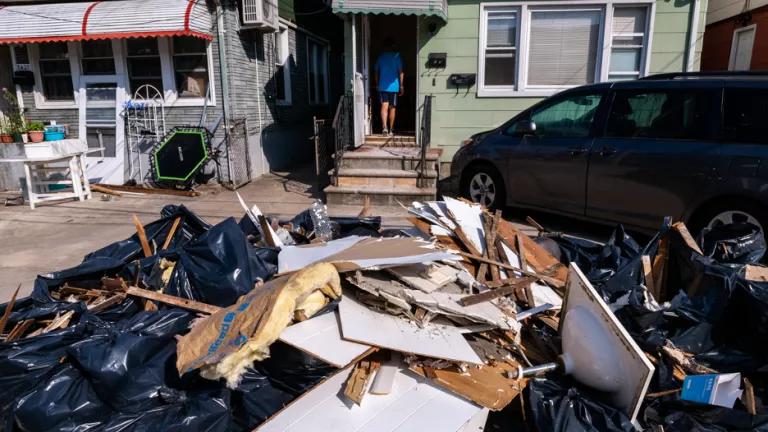NY Explores More Hands-on Role in Resource Adequacy, Part 1
The New York Public Service Commission (PSC) is planning to launch a proceeding to explore whether the state should play a larger role in ensuring “resource adequacy,” which simply means having enough electricity to meet overall customer demand at any given time.

Part II of this blog will discuss why New York is examining recourse adequacy now and what the PSC has proposed in terms of examining the interaction between capacity markets and the state’s clean energy goals. A background on how energy is regulated and how capacity markets work is discussed below.
Keeping the lights on is a vital responsibility that we all expect our elected officials and regulators to fulfill—just ask anyone who’s had their dinner or workday disrupted by a blackout. However, who is tasked with that responsibility and how are extremely complex and important issues to address. This is particularly prevalent in states like New York that are currently moving full steam ahead to fundamentally transform their electric system in order to meet ambitious climate and clean energy goals—including a grid that is cleaner, more nimble, and more efficient for consumers.
As part of this evolution, the New York Public Service Commission (PSC) is planning to launch a proceeding to explore whether the state should play a larger role in ensuring “resource adequacy,” which simply means having enough electricity to meet overall customer demand at any given time. Currently the federally regulated New York Independent System Operator (NYISO) is chiefly responsible for ensuring resource adequacy. As New York’s ambitious clean energy laws chart a rapid course toward a zero-carbon energy future, the state wants to be sure that NYISO’s resource adequacy rules facilitate rather than frustrate the law’s goals. The outcome of the PSC’s proceeding could affect how clean sources of electricity like solar, wind and battery storage effectively and efficiently participate in this process.
New York’s Dual System of Energy Regulation
The PSC shares authority over the state’s overall energy system with the Federal Energy Regulatory Commission (FERC), which regulates NYISO. NYISO operates what is known as the “bulk power system,” the network of large transmission lines (those big ones you see along the highway) that connect power plants to more local substations (and those smaller, state-regulated lines you see in your neighborhood). NYISO also runs the wholesale electricity markets, in which power plants sell energy and other grid products to utilities.
By contrast, the PSC regulates the sale of electricity from utilities and other energy suppliers to end-use customers like homes and businesses. The PSC also oversees the local utilities’ operation of the distribution system, which sends electricity from substations across local power lines to homes and businesses.
Most power outages occur as a result of failures in the distribution system, like downed power lines, and the state is responsible for preventing those types of blackouts—however, blackouts rarely occur because of a lack of adequate energy supply. Under New York’s current system, NYISO is responsible for ensuring that there is adequate energy supply, otherwise known as resource adequacy. To carry out this duty, NYISO operates a “capacity market.” Unlike NYISO’s “energy market” where actual electric energy (in megawatt-hours or MWh) is bought and sold to ensure that generation sources meet demand on a moment-to-moment basis, the capacity market (measured in megawatts or MW) does not involve physical electric energy. Instead, capacity is a promise to be available to provide energy if needed at a future time when the grid is under stress (e.g., when air conditioning usage spikes on a hot summer day).
NYISO requires the state’s utilities, like National Grid and Con Ed for instance, and other electricity suppliers to buy enough capacity each summer and winter to exceed projected electricity demand by a certain amount to provide a buffer in cases of peak demand. That amount, called the “installed reserve margin,” is designed to meet a standard that grid failures won’t occur more than once every ten years on average, even when the grid is stressed by high demand and other conditions (this NYISO slide deck provides some additional context). For example, an installed reserve margin of 17 percent means that New York’s utilities must buy enough capacity to exceed their projected peak demand by 17 percent. NYISO determines the rules for who can sell in the capacity market, as well as how much capacity credit to give each particular type of resource.
NYISO changes the capacity market rules as the system evolves. It may modify features such as local procurement requirements (in areas like New York City where there’s lots of congestion on the grid), who is eligible to sell, rules governing how sales offers are priced, and rules that determine how much credit each resource gets. For example, NYISO proposed and FERC approved the creation of a new Lower Hudson Valley zone in 2014, based on NYISO’s assessment that transmission grid constraints necessitated this change.



